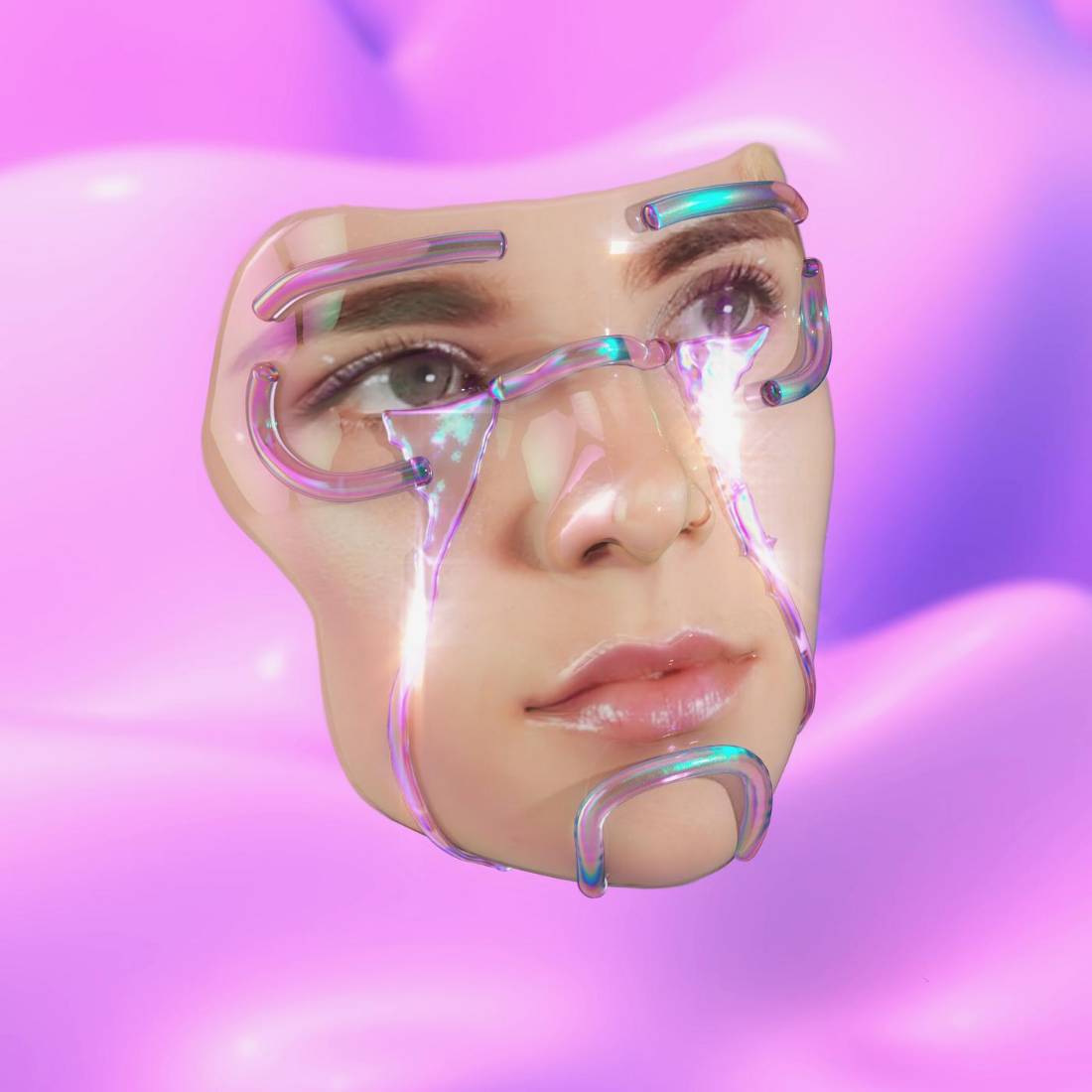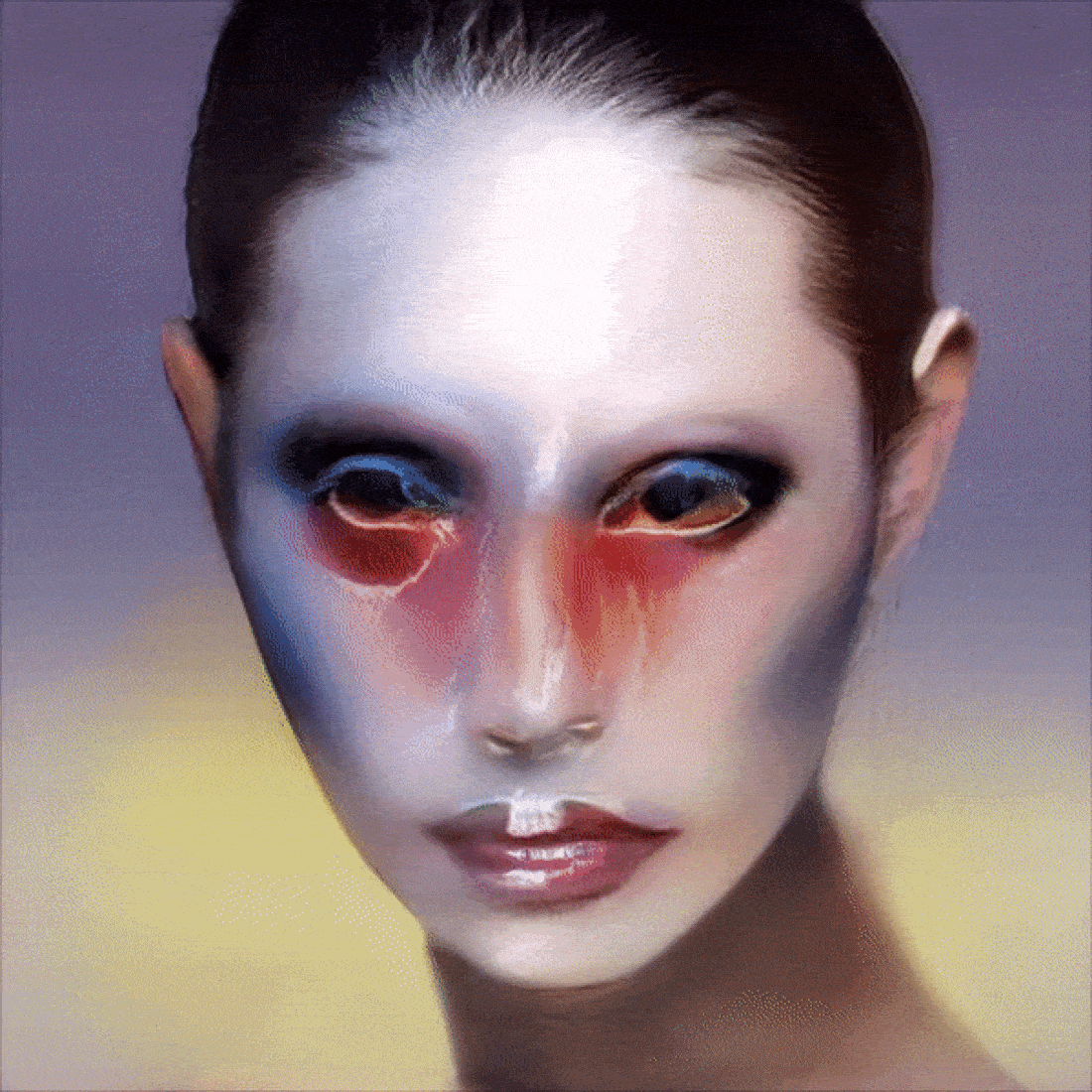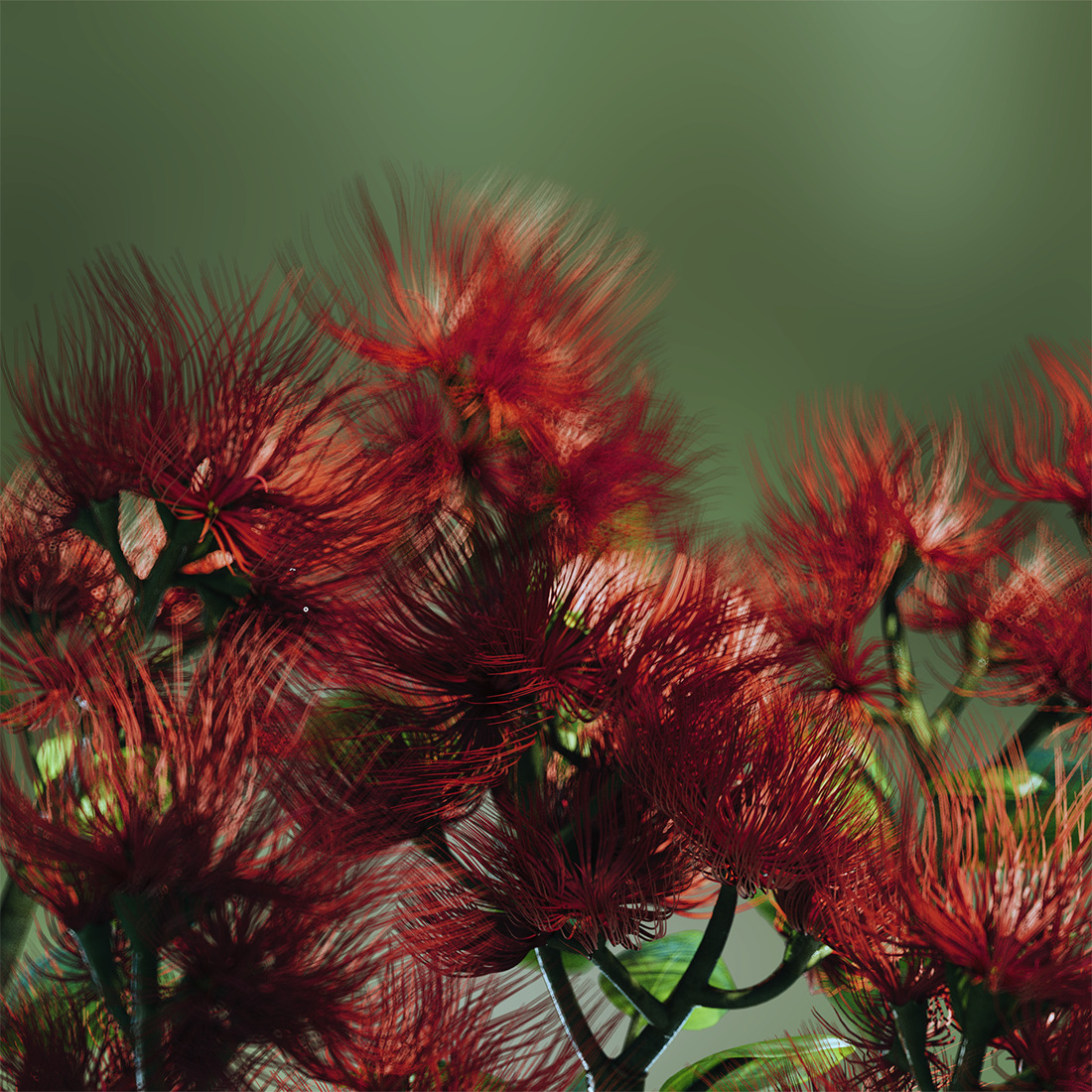BREAKING BOUNDARIES: IN CONVERSATION WITH LEADING DIGITAL CREATIVES

© Ines Alpha
In an industry where artistic expression knows no boundaries due to the constant adaptation and evolution of possibilities, three remarkable female artists have risen to the top, pushing boundaries with their inspiring visions and determination to explore the unknown. Meet Christina Worner, creative director and founder of the groundbreaking, female-led 3D motion design studio DADA PROJECTS. She is joined by Ines Alpha, a 3D artist extraordinaire known for conjuring enchanted versions of reality, and Claudia Rafael, a visionary digital artist and co-founder of NEWFORMAT, completes this trio of inspiring creatives. With them, we enter into captivating journeys and gain valuable insights into the dynamic world of design, creativity, and the ever-evolving creative field in which they passionately work.

© Dada Projects
Inspiration to work in the Creative Industry/Field
Christina Worner: The allure of the creative field, specifically design and 3D animation, has been a lifelong dream of mine. Since I was young, I had a natural affinity for art and was always intrigued by the power of visual storytelling. I found major inspiration in the works of iconic designers, artists, architects, and animators like Dieter Rams, Petra Cortright, Zaha Hadid, Hayao Miyazaki, and the creative minds at Pixar. Witnessing their ability to transport audiences to magical worlds and evoke profound emotions through their creations left a mark on me. The dedication to their craft and ability to push the boundaries in animation, art and design motivated me to pursue my dream and channel my creativity into this field.
Claudia Rafael: I’m super inspired by aesthetics created by algorithms and all types of glitches and errors that create unforeseen visuals that were not planned this way. Also, people who work scientifically and sociologically on the subject of technology inspire me a lot. And art in general, especially physical. Also the fashion and architecture fields are very stimulating.
Ines Alpha: It wasn't always my dream to work in the digital industry. In fact, the first time I laid my hands on a 3D software back in 2007, I remember thinking I would never touch that demonic product again. At that time, the software was quite intimidating. However, as I continued my career as an art director in advertising, I noticed significant improvements in 3D software. User interfaces became more user-friendly, and it became easier to play around with the tools. Around 2012, I started noticing some remarkable artists emerging in the digital art scene. They brought a fresh perspective to the art world, incorporating aesthetics that resonated deeply with my own interests, such as sci-fi, video games, and fantastic worlds. Inspired by these artists and fueled by my own obsession with these themes, I decided to give 3D experimentation another shot. To my surprise, I found myself developing a real knack for it. The more I dived into the world of digital art, the more I realized its potential for creative expression and innovation. It was an exciting turning point for me, and since then, I've been fully immersed in exploring the possibilities of digital art as a medium.

© Claudia Rafael
Preferences in the Creative Industry
Claudia Rafael: I am very grateful for the opportunity to be able to express myself through my work. Having clients who like what I do and come to me for the same reason is rewarding for me. Also meeting wonderful other creatives and collaborateurs. Working mostly digitally in front of a computer is the counterpart for me, even though I love it on the other hand. On the weekends I really enjoy being in nature without even a phone.
Ines Alpha: Working with evolving technologies is undeniably exhilarating. The fast pace of technological advancements and software updates continuously simplifies the realization of my creative vision. Personally, I find myself creatively dependent on how technology evolves. I have a plethora of ideas that I'm eager to bring to life, but I patiently await the opportunity to do so. While the digital industry still tends to be male-dominated, I'm thrilled to witness significant progress over the years. Many collectives and communities have actively placed women and non-binary individuals at the forefront, fostering a truly supportive environment. The shift in this perception fills me with immense pride, it's inspiring to see more and more women embracing technology. However, I must admit, there are certain aspects of technology that can be quite frustrating. The instability factor is real. From computer crashes to GPUs burning out to the eternal loss of files, it can be an absolute pain at times. And let's not even get started on the fear of missing out that arises whenever a new software, plugin, or platform is launched. The temptation to try them is real, but it can be overwhelming.
Christina Worner: What I love most about working in design and 3D animation is the opportunity to collaborate with so many inspiring, talented and like-minded creatives, in a supportive and dynamic environment. The constant evolution of technology keeps things fresh and exciting, and there is always something new to learn and explore. There are challenges though, and one aspect I find less enjoyable are the occasional creative constraints, or changing deadlines and briefs. Having said that, every client and project is unique, and while the varying dynamics and demands may at times be challenging, we always learn something new as a team. The positives far outweigh the negatives and this never-ending opportunity for growth make it an incredibly fulfilling career.

© Dada Projects
Collaboration
Ines Alpha: Collaboration has always been a fundamental aspect of my work, right from the beginning. Since I often use faces as blank canvases for my creations, I had the idea to incorporate the faces of people I know, admire, and draw inspiration from. This approach allows me to establish an artistic connection with individuals and experience the thrill of merging different personalities and skill sets. Each collaboration presents a unique challenge for me, pushing the boundaries of my work. It encourages me to step out of my comfort zone and explore new and different artistic directions. Working with others brings a fresh perspective, introducing ideas that I may not have considered on my own. It's an invigorating process that constantly fuels my creativity. Moreover, collaboration fosters a sense of community and shared creativity. The bonds formed through collaboration often extend beyond the project itself, creating a network of support, inspiration, and ongoing artistic growth.
Christina Worner: Collaboration is deeply ingrained in the DNA of our studio. We know that our work only really thrives when we all come together and bounce ideas off one another, both internally as our team and with our host of amazing freelancers too. We really value and encourage everyone to bring their unique ideas to the table and take agency too.
One particular project with an all-female team had such strong collaborative synergy - it was pretty amazing to witness. If someone was stuck there was a seamless exchange of knowledge and tips, really tapping into the collective consciousness of the whole crew.
We constantly encourage a positive collaborative space where ideas flourish, the team amplify each other, with the boundaries of what we can creative continuously being pushed.
Claudia Rafael: Collaborations are very important to me. The exchange and sharing of knowledge to unify skill sets can lead to fantastic outcomes. When collaborators value each other’s work, it forms a solid basis for creating something new together. I am very grateful to work together with many amazing and talented artists.

© Ines Alpha
Staying ahead of curve
Christina Worner: I find great joy in exploring new technologies, working with various mediums, and experimenting with different software tools. It's exciting to stack up programs and plugins, discovering ways to connect workflows for my team and I. For instance, last summer, we dedicated ourselves to learning Unreal Engine and integrating it into our creative process. Seeing its power in handling complex point cloud systems and rendering scenes in real-time was incredibly rewarding. By combining tools like Cinema4D and Unreal Engine, we've found more efficient solutions that save time and enhance our work. For me, the key is to stay curious and embrace the unknown. But it's not just about playing with gadgets and software! I make sure I’m surrounding myself with like-minded artists, chatting with people who inspire me and sharing our ideas and inspirations. Collaborating with fellow creatives across disciplines always brings fresh perspectives and keeps the creative juices flowing.
Ines Alpha: I couldn't agree more – curiosity is absolutely key. I have a natural inclination to explore and learn about new trends, software, and technological updates. I strive to gather as much information as I can to assess if it's beneficial for my work. However, I must admit that sometimes it can become overwhelming, especially when there's a constant stream of information and the fear of missing out on something exciting. Nonetheless, it's important for me to stay informed and understand what's happening in the ever-evolving digital landscape. Even if I can't immediately engage with all the latest advancements, having a general awareness allows me to adapt and make informed decisions when the opportunity arises. It's about being open to new possibilities and understanding the potential impact they can have on my creative process. Additionally, I believe in the power of asking questions. It's through curiosity and seeking knowledge that we expand our understanding. I don't hesitate to reach out to others and inquire about their experiences, insights, and opinions.
Claudia Rafael: I believe it is essentially a way of thinking, a mindset. Always being curious and open, not thinking, already knowing everything.

© Claudia Rafael
Design & Personal Development
Christina Worner: What makes a design unique is the ability to experiment beyond the expected, and challenge established norms. It's about bringing a fresh perspective, innovative ideas, and a distinct artistic vision to the table as a team. Developing a personal style is often a process that evolves over time. It involves exploring different techniques, experimenting with various mediums, and continuously refining our individual talents and the Dada Projects voice. We also like to explore and self-reflect as a team, ensuring we hone our skills with each project. It's a combination of conscious decision-making and organic growth influenced by personal experiences, inspirations, and individual creativity.
Ines Alpha: I wholeheartedly agree that the uniqueness of a design is often an unexpected and unpredictable outcome. Sometimes it takes time, while other times it happens spontaneously. The key, in my experience, is to embrace experimentation and allow room for trial and error. It's through this process that truly remarkable and distinctive designs can emerge. What I find most crucial is infusing the design with your own culture, background, and personal experiences. That's what truly makes it your own and brings forth your unique artistic vision. Certainly, following trends and drawing inspiration from the abundance of images we encounter daily is inevitable in today's visually rich world. However, it’s about delving into your own passions, interests, and perspectives. That's where the magic happens, where your art stands out from the rest. Personally, it took me until the age of 31 to truly believe that I could develop my own style and vision. It happened somewhat unexpectedly, emerging as a result of experimentation and playfulness. Without putting pressure on myself or focusing solely on the outcome, I allowed myself the freedom to explore. Then, one day, I had the realization that I could blend my two passions—makeup and 3D – and create something unique and exciting. I hadn't seen it done before, so I thought, "Let's go for it!" Even now, it's sometimes hard to believe that I created something truly unique simply by following my heart and pursuing my passions.
Claudia Rafael: To me, it is essential that what I create fits the project's content and meets my aesthetic standards. I would never consider creating something that pleases everyone. First and foremost, I must be enthusiastic about it, and I love it when people become polarized by my work. Good art needs to polarize, and I prefer people who don't like my art and love it on the other hand instead of everyone thinking it's "nice". For example, with the AI Beauty Portraits, some people say they are fascinating and beautiful. However, there are others who say they find the look quite uncanny.

© Ines Alpha
Change in the Creative Industry
Claudia Rafael: In my opinion, it's more about how you deal with the circumstances your own way. How to manage working in the creative industry with your values and work morals.
I think opportunities are huge, especially in the creative industry, you don't need a title to be seen or heard, you can equally be an autodidact. Just stick to your dreams and values and go on creating, it’s all about what you make out of it.
Christina Worner: One aspect I would like to see change in the creative industry is the need for more gender diversity, particularly at the directorial level. There is a significant discrepancy between the number of womxn graduating from creative majors and the number of womxn leading creative teams in this industry. It is disheartening to browse through platforms like LinkedIn and observe that a majority of leading creatives are male, when there is such femme talent out there that I see every day. Increasing the representation and leadership opportunities for womxn in the industry is crucial for fostering a more inclusive and balanced creative landscape, and it’s something I try to use my voice to promote and support whenever I can. Dada Projects are currently an all-female team, often collaborating with femme freelancers too. It’s a joy to work in such an inclusive environment and I strive to provide equal opportunities and mentorship within the team, that will empower womxn to excel and develop in their careers.
Ines Alpha: I cannot agree more regarding your sentiment about the need for increased diversity and visibility of women in the creative industry. It's sad to see that even in fields like advertising or the beauty industry, where women are often the target audience, the majority of creative directors and decision-makers are men. It's an issue that needs to be addressed. It's unfortunate that women are often discouraged from participating in events, conferences due to self-doubt, while men don't question themselves. However, I am optimistic as I witness more and more incredibly talented women entering this world. We are building strong and supportive communities that empower each other. Another aspect I would like to see evolve, particularly in the NFT world, is a shift away from an excessive focus on financial speculation and towards a stronger emphasis on human and artistic values. The pursuit of massive profits, rather than the appreciation of genuine artistic expression, can sometimes overshadow the true essence and purpose of creativity. Addressing this issue requires a deeper examination of the underlying capitalist structures that drive such behaviors. It's indeed a complex and extensive conversation that needs to be had.




